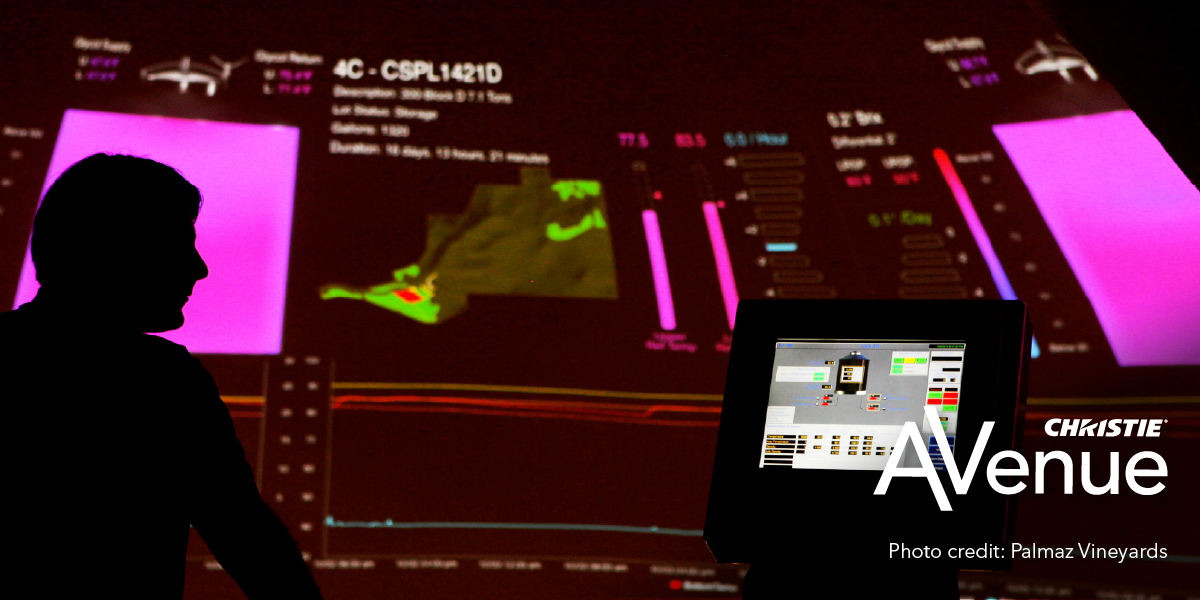The science of winemaking as an art. A vineyard visit

If joy is such an easy thing, why is it often horribly complex to create? Take wine. It’s one of life’s great simple pleasures, yet nothing’s straightforward in winemaking. The journey from harvest to glass typically takes around a year — often much longer — and during that time, the process is constantly monitored, modified, and massaged by an army of vintners, chemists, and technologists.
At Palmaz Vineyards in Napa Valley, California, they’ll tell you that patience and perfection walk hand-in-hand. That to put joy in a bottle, there’s no option but to put in the hard hours. It’s why they carved their winery, a vast purpose-built cavern, into the flanks of Mount George. So everything can be gravity-fed and no pumps can damage the wines’ delicate molecular structure.
Impressive data projection
And how do they manage this river of slowly maturing joy as it flows through an underground labyrinth that covers the equivalent of five city blocks? The answer is a mixture of art, science, and an impressive data projection onto the vast domed ceiling of the main fermentation room.
Christian Palmaz, COO, Palmaz Vineyards, says the science is well understood, “something that any first-year enology grad student can do,” but that a true winemaker’s art requires judgement and collaboration — and that can easily get lost unless the numbers are shared and visible to all. Their software system, Fermentation Intelligence Logic Control System (FILCS), takes millions of calculations per second from inside each tank, and with a team of three experts working together, it’s easy to get different stylistic interpretations of what the data is actually saying.
“Color is really important,” explains Palmaz. “Because of our thermographic displays, color means something to us. Seeing the dynamic color effect — as the temperatures change — is like varying shades of bathwater. You’re talking about a five or six-degree temperature change in the tank. But the range of color helps us visualize even slight variations in temperature. The color fidelity of the newly installed Christie M 4K25 RGB pure laser projectors with their wide color gamut and color accuracy translates into a better understanding of how temperature is distributed in the tank.” Read the full case study on Palmaz Vineyards.
Creation and consumption
But in the end, and in the glass, everything comes down to the winemaker’s judgment and experience. Winemaking is an art because both its creation and its consumption involve matters of personal taste. Technology helps, and significantly so, but this is not a by-numbers game. It’s a skill and a talent in the same way image creation is: both need that human spark to lift them from the mundane, and both are scientific endeavors with joyous outcomes. It doesn’t matter if it’s delivered in a crystal glass or on a silver screen; neither would have the same power or command the same devotion if there wasn’t a degree of artistry in their creation. You can’t reduce winemaking to a chemical formula or images to RGB values without losing the best part of what makes them special. Creative people do that, and we’ll always raise a glass to them, and the joy they bring.






